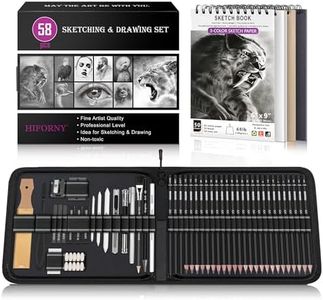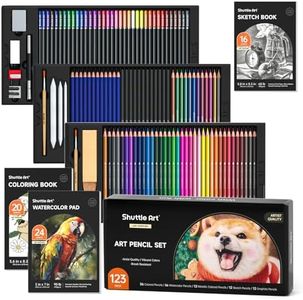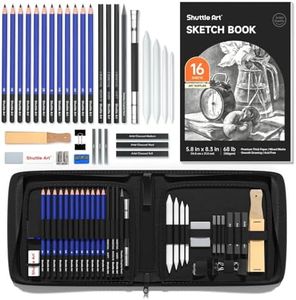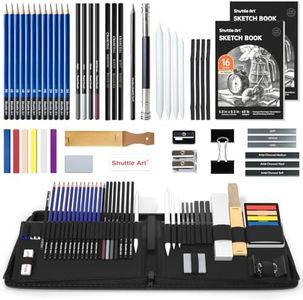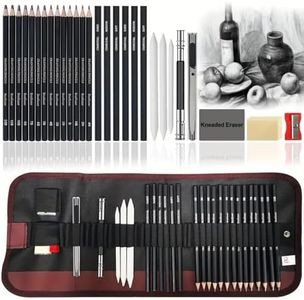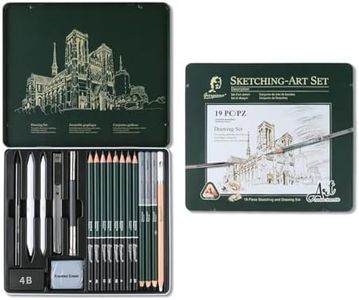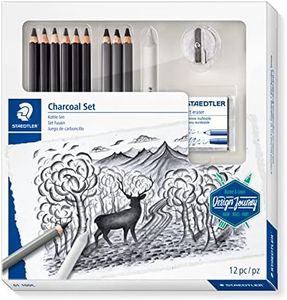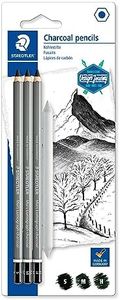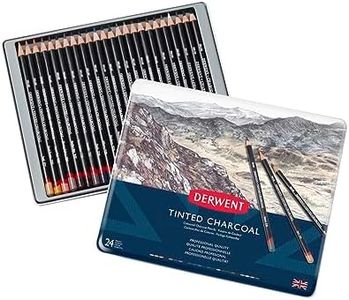We Use CookiesWe use cookies to enhance the security, performance,
functionality and for analytical and promotional activities. By continuing to browse this site you
are agreeing to our privacy policy
10 Best Charcoal Pencils
From leading brands and best sellers available on the web.Buying Guide for the Best Charcoal Pencils
Choosing the right charcoal pencils can make a big difference in your drawing experience. There are a few key things to consider to ensure you get a set that matches your style, subject matter, and comfort level. Think about what you like to draw, how detailed you want your work to be, and whether you prefer rich dark tones or lighter shading. Understanding various specs will help you narrow down your options and pick pencils that make drawing enjoyable and effective.Charcoal Hardness/SoftnessCharcoal pencils come in different levels of hardness, usually labeled as hard, medium, or soft. This refers to how much black pigment the pencil leaves on the paper and how easily it smudges or blends. Hard charcoal pencils give lighter, crisper lines and are great for fine details and initial sketches. Medium hardness offers a balance, suitable for both shading and linework. Soft charcoal provides deep, rich blacks and smooth shading, ideal for expressive or dramatic drawings, but can smudge more easily. To choose, consider whether you prioritize precision (lean towards hard or medium) or deep, expressive marks (choose soft). Many sets offer a mix, which is a good way to experiment.
Pencil Casing MaterialCharcoal pencils can have different casing materials, most commonly wood or sometimes paper-wrapped. Wooden pencils feel like regular drawing or writing pencils and are durable, while paper-wrapped ones can be peeled back as you use them, which can be more convenient for adjusting the exposed charcoal. If you like a cleaner, classic feel, go with wood. If you want easy control over how much charcoal is exposed and don’t mind getting your hands a bit dirty, try paper-wrapped.
Charcoal TypeThere are mainly two types: natural charcoal (often willow or vine) and compressed charcoal. Compressed charcoal is mixed with a binder, making it darker, smoother, and less fragile, while natural charcoal is lighter and airier, producing delicate greys. Charcoal pencils usually use compressed charcoal, so you get consistent dark marks. If you prefer lighter and more subtle shading, check if the pencil line offers a natural or less-binded option. Think of what effect you want in your drawings—crisp dark lines, or soft, ethereal effects—when choosing.
ErasabilitySome charcoal pencils can be easily erased for correcting mistakes or creating highlights, while others might stain the paper more. Generally, harder charcoal erases better, while softer types can be harder to remove. If you plan on refining your work or want to be able to change it often, look for pencils marketed as easy to erase. If permanence matters more to you, the softer, less-erasable kinds might be suitable.
Pencil ThicknessCharcoal pencils come in different diameters, affecting how the pencil feels in your hand and how broad the strokes can be. Thinner pencils are better for precise, detailed work, while thicker ones are suited for bold marks and broad shading. Choose thinner pencils for delicate, small-scale drawings and thicker ones for larger sketches or expressive lines.
